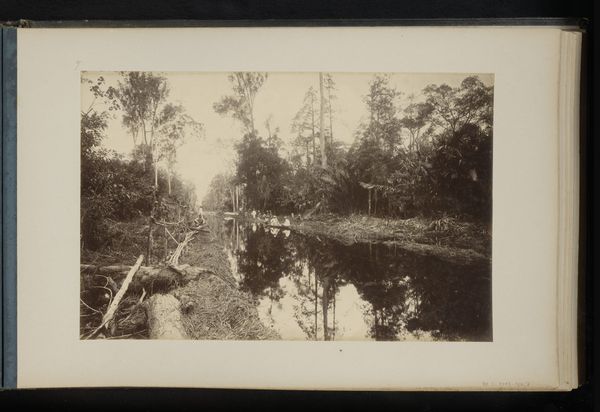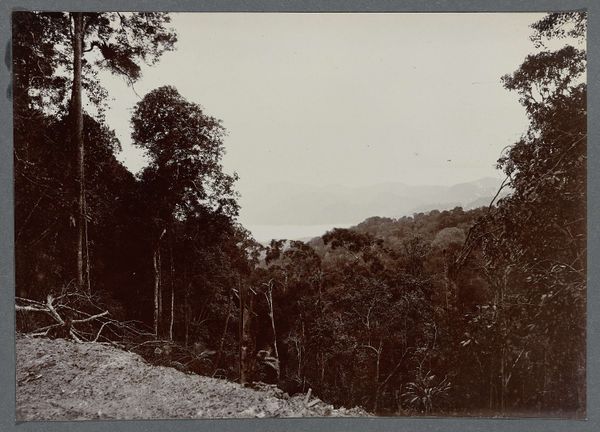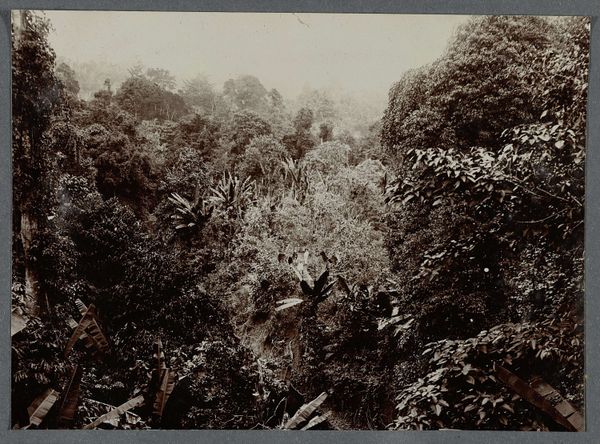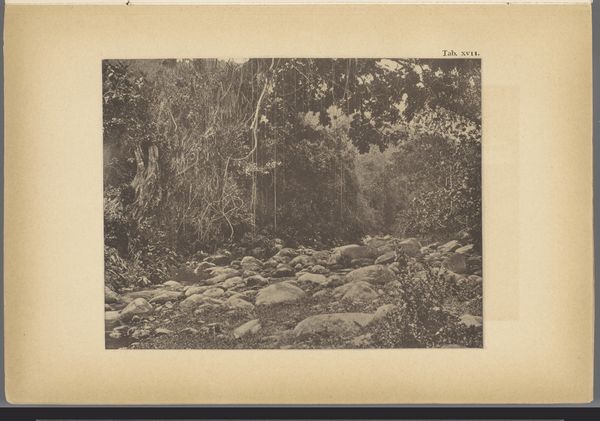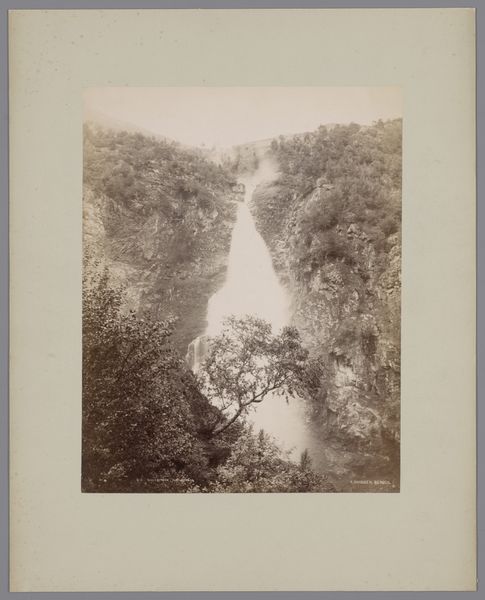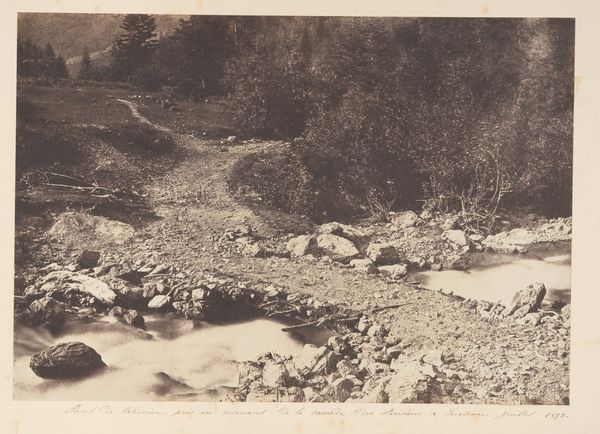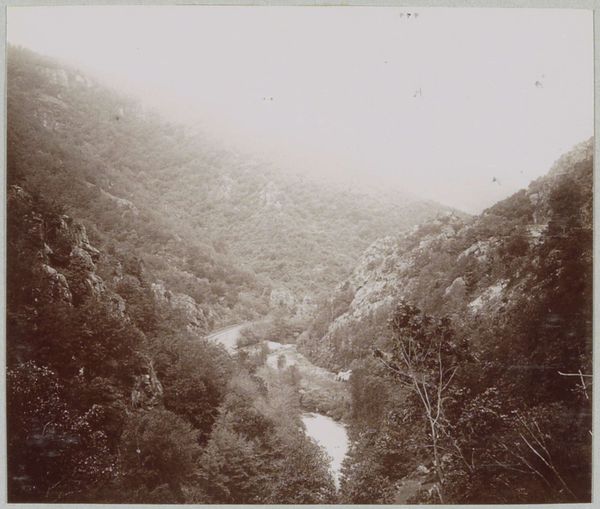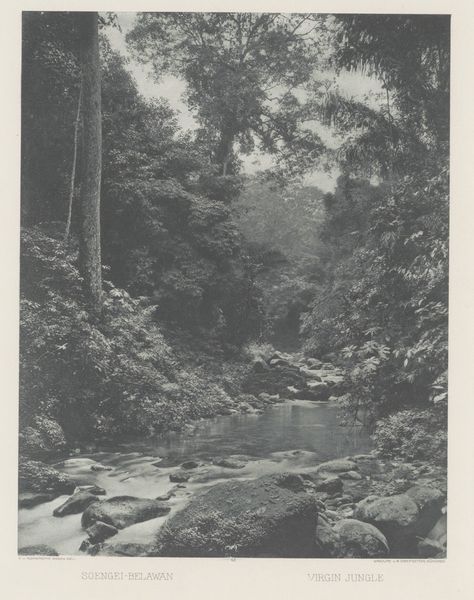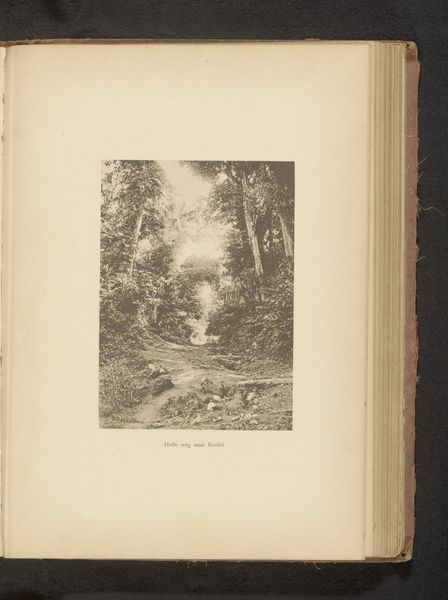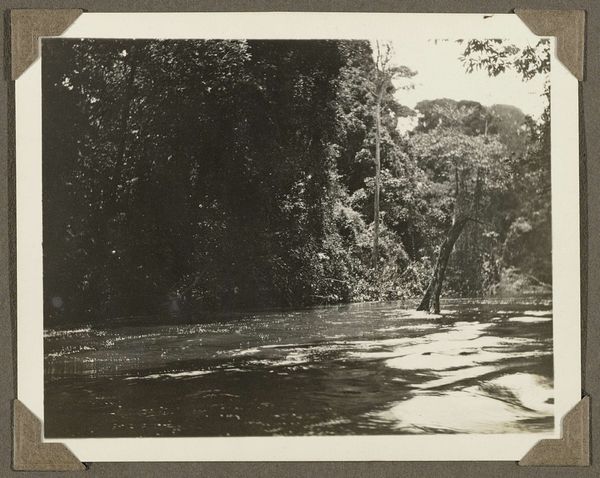
photography
#
16_19th-century
#
landscape
#
waterfall
#
photography
#
realism
Dimensions: height 265 mm, width 355 mm
Copyright: Rijks Museum: Open Domain
Curator: Looking at this photograph, I’m immediately struck by the dynamism – the sheer energy captured in this churning water. It’s almost overwhelming. Editor: It is, isn’t it? What you’re viewing is a work attributed to Heinrich Ernst & Co, taken circa 1890 to 1900. The piece is titled "Waterval in Pamoe-Oekoer, Sumatra," currently residing here at the Rijksmuseum. A beautiful example of landscape photography from the period. Curator: Landscape, yes, but consider the social context. Sumatra under Dutch colonial rule at this time would have meant the exploitation of resources and labour, which may offer another way to view the scene. Were images like this used to promote the "untouched" natural landscape to attract tourism and investment? Editor: An intriguing line of thought! Perhaps, and let’s not forget the potential symbolism of water, especially moving water like a waterfall. It represents purification, the passage of time, and even resilience in the face of obstacles, themes certainly resonant in that period, and indeed, today. It connects to the broader human experience of confronting the power of nature. Curator: Indeed. But speaking of experience, the scale of photographic prints in that era were considerably more modest than what we’re accustomed to today. I am really curious about what equipment the photographer used and how they were able to travel and access these somewhat remote regions and record what they encountered there. This isn't the result of spontaneous "tourism," but of planned expeditions, I imagine. Editor: Precisely! I am keen to see if that movement of water can also be viewed as a symbolic attempt to highlight purity as colonial presence disrupted Indonesian societal balance. I like the thought of a colonial power needing water to somehow cleanse their disruptive presence. Curator: These considerations allow us to dive deeper, to view these older photographs through multiple perspectives. It’s about recognising both the visual beauty and the inherent colonial structures at work. Editor: Absolutely. Seeing beyond the initial, aesthetically pleasing image is indeed critical, especially when discussing cultural preservation or exploitation. The piece truly embodies the confluence of raw power, aesthetic representation and layered, charged, historical undertones.
Comments
No comments
Be the first to comment and join the conversation on the ultimate creative platform.

